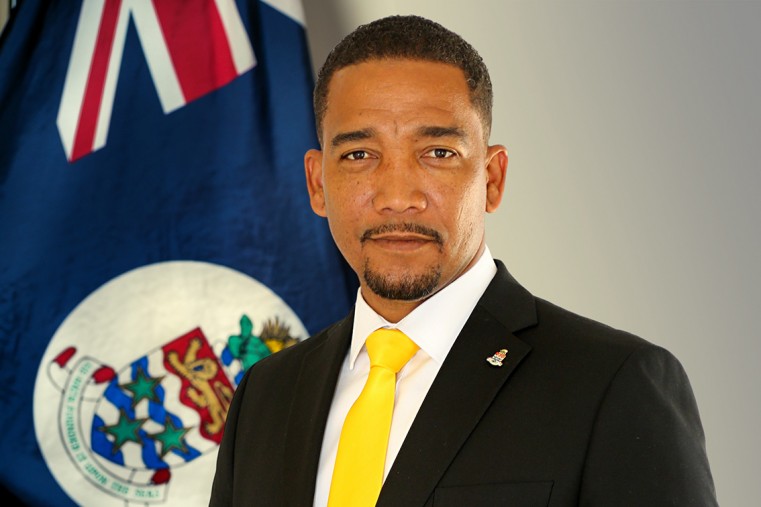- Job Market
- Upload Ad Requests
- Rates
- Home
- Video
- About Us
- Contact Us
- Business Showcase
- Archives
- Blogs
- Upload Advertisements
- Video News Release
- Front Pages
- Community Notices
- Law Enforcement
- Government
- Community Voice
- Health Care
- International
- Sports
- Politics
- Community
- Entertainment
- Advertorial 2
- Non-Profit Organisation(NPO)
- Adopt a Pet
- Tourism
- CIIPO
- Taste of Class
- Opinions & Editorial
- Environment
- Outstanding Employee
- Outstanding Performance
- Celebration
- Gardening
- Beneficial Ownership
- Tips and tricks
- Cover Stories
- Cost of Living
- Development
- Employment
- Education
- Arts and Culture
- Business
- Global News Briefs
- Hurricane Watch
- Breaking News
- Regional
- Public Notices
- Local News
- Lifestyle
- Finance
- Economic
- Election Center
- COVID - 19
- UK Territories
- Advertorial
- History
- Inspiration
- The Panel
- The Interview
- Cayman Conversation
- Community Notices
- Law Enforcement
- Government
- Health Care
- Sports
- Election Center
- Cayman Conversation
- More
- Front Pages
- Community Notices
- Law Enforcement
- Government
- Community Voice
- Health Care
- International
- Sports
- Politics
- Community
- Entertainment
- Advertorial 2
- Non-Profit Organisation(NPO)
- Adopt a Pet
- Tourism
- CIIPO
- Taste of Class
- Opinions & Editorial
- Environment
- Outstanding Employee
- Outstanding Performance
- Celebration
- Gardening
- Beneficial Ownership
- Tips and tricks
- Cover Stories
- Cost of Living
- Development
- Employment
- Education
- Arts and Culture
- Business
- Global News Briefs
- Hurricane Watch
- Breaking News
- Regional
- Public Notices
- Local News
- Lifestyle
- Finance
- Economic
- Election Center
- COVID - 19
- UK Territories
- Advertorial
- History
- Inspiration
- The Panel
- The Interview
- Cayman Conversation
Subscribe
Reimagining cruise tourism for Cayman
Cayman Islands Director of Tourism Rosa Harris

Hon Kenneth Bryan

By Lindsey Turnbull
Second in our series looking in detail at the 2024 National Tourism Plan.
With cruise tourists decreasing in numbers since the pandemic, the Cayman Islands government is having to reimagine the cruise tourism industry as to how the country can make this sector of tourism more profitable and less negatively impactful on the islands. The newly launched Cayman Islands National Tourism Plan outlines the dwindling numbers of cruisers and states that, while the number of cruise ship passenger arrivals to the Cayman Islands more than doubled over the past two decades, from roughly 800,000 in 1996 to more than 1.8 million in 2019, the number of cruise ship calls had increased by only 13.8%, from 528 to 601. During the pandemic, there were no cruise calls to the destination from 16 March 2020 until cruise ship calls resumed in March 2022
Since then, cruise ship numbers have never fully recovered. 743,394 cruise passenger arrivals were counted between March and December 2022. Passenger arrivals in 2022 were 40.1% of pre-pandemic levels. In 2023, the destination received 1,270,981 cruise passengers. This figure represents a decrease of 560,030 individuals, or 30.6%, compared to the cruise passenger arrivals during the same period in 2019.
The NTP states that the takeaway from this trend is the increasing capacity of cruise ships and the growing challenges of effectively managing the large influx of passengers when several ships arrive in port, impacting taxis, tours, traffic, shopping venues, bars and restaurants. Potential knock-on negative impacts on local communities include traffic and congestion problems. Government must also consider the impact on higher spending stayover tourists who spend roughly double the amount spent by cruise passengers (per day), and more on locally produced goods and services. It must also get to grips with maximising visitor spending and local added value.
The development of a new cruise tourism strategy is therefore a priority for the government. The NTP states this entails development of a new vision for sustainable cruise tourism with enhanced management of cruise ship arrivals and related visitor services to maximise the positive impacts on local businesses and, by extension, the local economy and the visitor experience (for both cruise and stayover arrivals), and minimise the negative impacts from traffic, congestion, and strains on local service providers and communities.
The Cayman Islands cruise strategy has been developed by the Ministry of Tourism & Ports as a draft, aiming to bolster the sustainability and development of its cruise tourism sector through a multifaceted approach. This entails broadening the mandate and governance of the Land and Sea Co-op to empower private sector involvement, diversifying visitor experiences beyond traditional attractions like Seven Mile Beach, and implementing strategic policies to foster industry growth while addressing environmental and community concerns.
Collaboration among stakeholders, comprehensive assessment of cruise assets, support for small businesses, and adherence to core values such as collaboration, innovation, and authenticity are pivotal aspects of the strategy, the government states. By prioritising these efforts, the Cayman Islands seek to optimise cruise ship visits and expand on the islands that benefit, stimulate economic prosperity, and deliver exceptional, culturally-rich experiences for visitors while safeguarding the destination’s natural and cultural resources
The CTO Sustainable Tourism Policy Development Framework (2020) highlights three aspects of cruise tourism that Caribbean destinations should address. Firstly, there must be consideration for the capacity demands placed on destinations by the new generation of mega cruise ships in the Caribbean.
“In this regard, specific attention must be placed on cruise ship infrastructure and the need to address crowding, traffic and flow management issues as well as carrying capacity limits that may occur when cruise ships are in port,” the NTP states. Secondly, focus must be placed on accessing the purchasing power of cruise passengers and crew to the greatest extent possible, and thirdly, the illegal dumping and discharge of waste in Caribbean waters by cruise ships need to be addressed and monitored.
The draft Cayman Islands Cruise Tourism Strategy (2024) highlights additional public infrastructure aspect to be addressed, including technological innovations, whereby the travel and tourism industry has seen sweeping transformation in recent times. In cruise tourism, technological changes have impacted the sector end to end. The destination must explore opportunities for significant technological upgrades in onshore services as well as port infrastructure to improve the visitor experience, the NTP states.
Online Poll
Independent or Party: Independents top the Category with 23 Candidates. Select your preference
Popular News
Mexico beat Cayman 20-10 in ‘Big Match X’ Rugby
05 Jun, 2024
CIOC announces team for Paris 2024
11 Jul, 2024















Comments (0)
We appreciate your feedback. You can comment here with your pseudonym or real name. You can leave a comment with or without entering an email address. All comments will be reviewed before they are published.